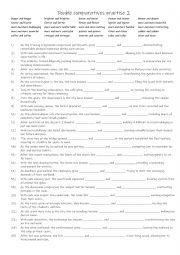
|
B1+-B2 25 Double comparatives Part 2
Double comparatives are used to describe a situation where something increases or decreases progressively. By repeating the comparative form, we emphasise how the quality or action becomes more extreme. This structure is common in English, and learning it can help express change in a dynamic and descriptive way. Native speakers use double comparati...
Level: intermediate
Age: 9-100
Type:
Downloads: 102
|
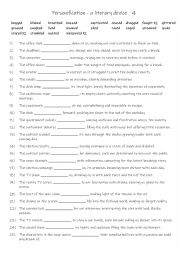
|
B2-C1 Personification - a literary device 4
Learning personification helps students bring their writing to life by giving human qualities to non-human things, making descriptions more engaging and relatable. It enhances creativity, allowing them to craft vivid imagery and evoke emotions in their readers. Understanding personification also deepens their appreciation of literature, as it is a ...
Level: intermediate
Age: 12-100
Type:
Downloads: 141
|
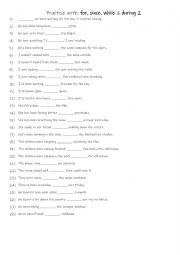
|
A2+-B1 Practise with for, since, while & during (2)
Learning to use for, since, during, and while is important because these words help student�s express time accurately in English, especially when talking about the duration and timing of events. For indicates the length of time an action takes place, while since pinpoints when an action started and continues until now, helping to show continuity. D...
Level: intermediate
Age: 9-100
Type:
Downloads: 111
|
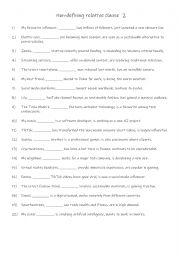
|
Non-defining relative clause 2
Students complete the gap-fill with the correct word. Answers on page 2.
Level: elementary
Age: 10-100
Type:
Downloads: 113
|
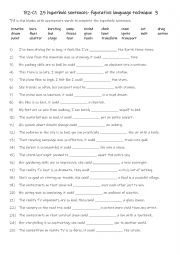
|
B2-C1 25 hyperbole sentences- figurative language technique 3
Recognising and using hyperbole sharpens analytical thinking, as students learn to interpret exaggerated expressions in context. Overall, mastering this figurative language technique makes both written and spoken communication more compelling and expressive. First, students need to familiarise themselves with the 25 words and their meaning. Then th...
Level: advanced
Age: 15-100
Type:
Downloads: 123
|
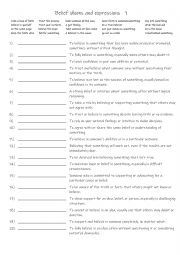
|
B1+-C1 Belief idioms and expressions 1
First, students need to familiarise themselves with the 20 idioms and expressions and their meanings. Then they read the definitions to see which one is being described and write that word in the space provided Answers on page 2.
Level: intermediate
Age: 12-100
Type:
Downloads: 114
|
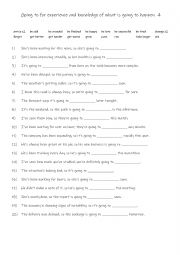
|
Going to for experience and knowledge of what is going to happen 4
First, students need to familiarise themselves with the verbs and their meanings. Then they read the sentences to see which one is required to complete the sentence. Answers on page 2.
Level: elementary
Age: 8-100
Type:
Downloads: 112
|
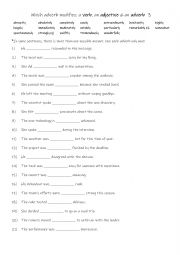
|
Which adverb modifies a verb, an adjective & an adverb 3
First, students need to familiarise themselves with the 21 adverbs and their meanings. Then they read the sentences to see which one is required to complete the gap-fill. Additionally, recognising whether it modifies a verb, an adjective & an adverb. Each type is modified 8 times! Answers on page 2.
Level: elementary
Age: 10-100
Type:
Downloads: 111
|
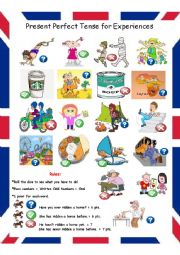
|
Present Perfect Tense for Experiences
An enjoyable speaking and writing supplement to reinforce asking questions, answering using both affirmative and negative sentences. To get a mixture of both oral and written work I normally have something small enough to hide in my hand. If the object is in the hand not selected, they have to write the sentence. To encourage students, I usually gi...
Level: elementary
Age: 9-100
Type: activity-card
Downloads: 271
|
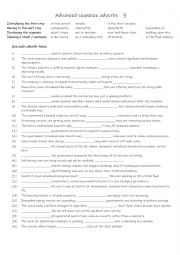
|
7 Advanced sequence adverbs 3
First, students need to familiarise themselves with the 7 adverbs. Then they read the sentences to work out which one is needed to complete the gap-fill. Each adverb is used 3 times! Answers on page 2
Level: advanced
Age: 12-100
Type:
Downloads: 130
|












